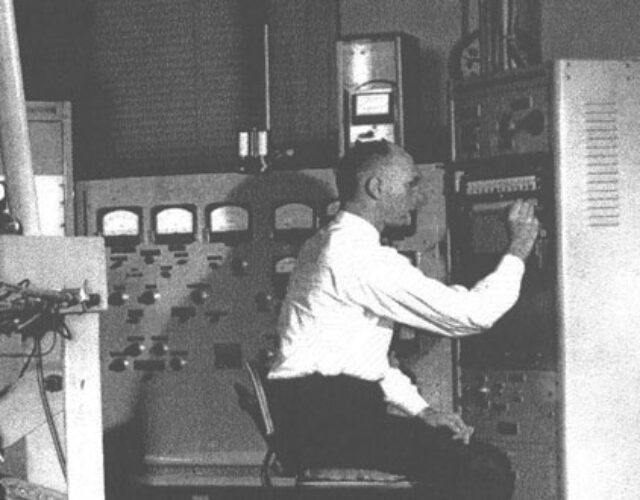For Christmas in 1937, 15-year-old Frank Field received a Chemcraft chemistry set. Experimentation immediately engrossed him, and soon his increasingly elaborate experiments required the purchase of chemicals from various supply houses in New York. One such experiment with a friend involved broken oyster shells, sulfur, and heat. But instead of the luminous calcium sulfide they were expecting, the experiment yielded large amounts of sulfur dioxide, an irritant, which sent the duo rushing around the house, frantically opening windows before his parents’ return.
Field continued to move quickly, dashing through college and becoming a researcher in early mass spectrometry. Today mass spectrometers are ubiquitous in chemistry labs, and mass spectrometry is used in everything from testing newborns for various diseases to identifying complex biological molecules. But in the 1940s mass spectrometry as a research tool existed only in a small number of university and petroleum industry labs. Most chemists did not even know what a mass spectrometer was, much less what it could do: that is, identify unknown compounds, even in minuscule amounts. By spraying electrons at a molecule and then measuring the distance the resulting charged molecule travels, a mass spectrometer can detect even the smallest trace of a substance—such as environmental pollutants, which can often only be found in a few parts per billion.
In 1948 Field, a newly minted chemistry PhD, accepted a post as an instructor at the University of Texas in Austin. His thesis research had focused on magnetochemistry—the magnetic properties of materials—but the university could not afford the magnet he required. Instead, he got a hand-me-down mass spectrometer. “I didn’t know mass spectrometry from a hole in the ground,” Field says in his CHF oral history, “but I said yes.” He moved the mass spectrometer to his lab at an old magnesium plant the university had converted. “My assistant and I started opening up these boxes. It was a disaster. . . . Every single piece of glass was broken.”
Field was not deterred; “I got the thing set up and I got it working. Not a bad trick for somebody who was starting absolutely from scratch, but that’s the way I got into mass spectrometry.” Then Field encountered yet another issue: “I had to decide, well, what can I do with this thing now?” After scouring the mere handful of research papers available, he decided to measure the energies of the gaseous ions formed from various compounds, starting with cyclopropane—a compound no one had previously measured.
In 1951 an article announced the existence of a previously unknown molecule, CH5+, which was discovered via mass spectrometry. Field remembers thinking, “If that happens, who knows what other startling things might happen.” He and his collaborators set out to discover just what that could be. His work caught the attention of Humble Oil’s Joseph Franklin, and in 1952 Field joined Humble. Field and Franklin went on to make a major contribution to gaseous-ion chemistry, which is an important component of mass spectrometry.
Oil companies had been early adopters of mass spectrometry, which allowed them to analyze the complex mixtures their refineries were producing. Mass spectrometry identified the complicated hydrocarbons in petroleum much faster than other available methods and thus significantly cut the time needed for analysis. Franklin and Field’s research in gaseous-ion chemistry created a foundation for a growing but still disorganized discipline. Owing to the amount of research led by Field and Franklin, colleagues induced them to write a book. Electron Impact Phenomena and the Properties of Gaseous Ions was published in 1957. For Field and the rest of the mass-spectrometry community, this first book on gaseous-ion energetics “made a science” out of the discipline.
By the end of the 1950s mass spectrometry and gaseous-ion chemistry were hot topics in academia as well as industry. Chemists synthesizing new materials could quickly figure out what they had made. Field’s research and book pushed the discipline forward, influencing future mass spectrometrists. For Field it was the natural track of innovation: “You pursue it, discover it, and then develop something. That’s what happened with me.”




